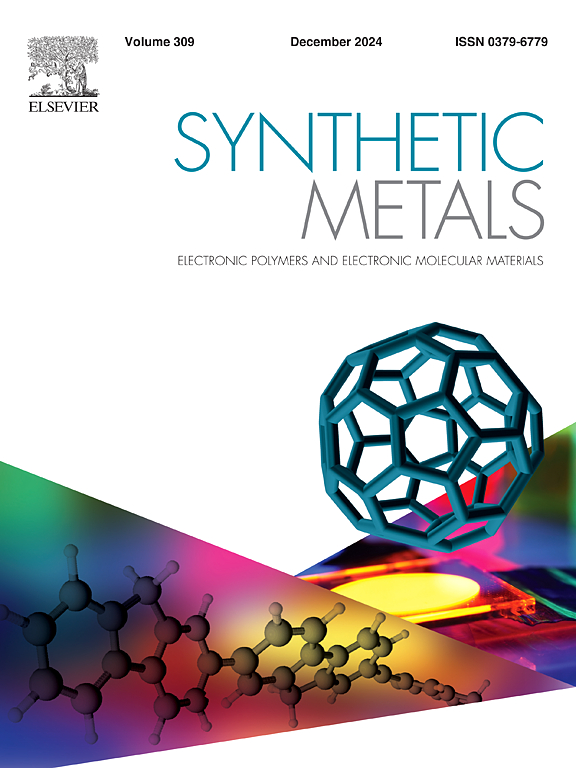A tris-buffer appended Schiff base as a fluorescent probe for Al3+ and its potential application in Zebrafish imaging
IF 4
3区 材料科学
Q2 MATERIALS SCIENCE, MULTIDISCIPLINARY
引用次数: 0
Abstract
Aluminum (Al) levels in living organisms and the environment are vital to human health and the environment. Therefore, a rapid and susceptible probe for detecting Al3+ is required. A new fluorescent probe E)-2-(((8-hydroxy-2,3,6,7-tetrahydro-1H,5H-pyrido[3,2,1-ij]quinolin-9-yl)methylene)amino)-2-(hydroxymethyl)propane-1,3-diol (JulAmino-Tris), was developed through a straightforward Schiff base reaction and analyzed using various spectroscopic techniques. The chemosensing potential of JulAmino-Tris was investigated using UV-vis and fluorescence spectroscopy in a partially aqueous medium. The pristine form of JulAmino-Tris in pure dimethyl sulphoxide (DMSO) is non-fluorescent due to PET, ESIPT, and ICT processes. JulAmino-Tris probe showed turn-on fluorescence behavior in the presence of Al3+, while other metal ions remained non-responsive. The probe emits cyan fluorescence upon binding to Al³ ⁺, inhibiting these processes. The 1:1 non-covalent complex formation and detection mechanism was confirmed through Job's plot, mass spectrometry, ¹H NMR titration, and DFT calculations, with a detection limit of 25 nM. The JulAmino-Tris probe demonstrated low cytotoxicity and efficacy in Zebrafish imaging studies and its utility in detecting Al³ ⁺ in water and drug samples.
三缓冲液附加希夫碱作为Al3+荧光探针及其在斑马鱼成像中的潜在应用
生物体和环境中的铝(Al)水平对人类健康和环境至关重要。因此,需要一种快速灵敏的检测Al3+的探针。通过简单的希夫碱反应,制备了一种新型荧光探针E)-2-(((8-羟基-2,3,6,7-四氢- 1h,5H-pyrido[3,2,1-ij]喹啉-9-基)亚甲基)氨基)-2-(羟甲基)丙烷-1,3-二醇(JulAmino-Tris),并利用各种光谱技术对其进行了分析。采用紫外-可见和荧光光谱法研究了JulAmino-Tris在部分水介质中的化学感应电位。由于PET、ESIPT和ICT处理,纯二甲基亚砜(DMSO)中的原始形式的JulAmino-Tris是非荧光的。JulAmino-Tris探针在Al3+存在时表现出开启荧光行为,而其他金属离子则保持无响应。探针与Al³ ⁺结合后发出青色荧光,抑制了这些过程。通过Job’s plot、质谱、¹H NMR滴定、DFT计算,确定了1:1非共价络合物的形成及检测机理,检出限为25 nM。JulAmino-Tris探针在斑马鱼成像研究中显示出低细胞毒性和有效性,并可用于检测水和药物样品中的Al³ ⁺。
本文章由计算机程序翻译,如有差异,请以英文原文为准。
求助全文
约1分钟内获得全文
求助全文
来源期刊

Synthetic Metals
工程技术-材料科学:综合
CiteScore
8.30
自引率
4.50%
发文量
189
审稿时长
33 days
期刊介绍:
This journal is an international medium for the rapid publication of original research papers, short communications and subject reviews dealing with research on and applications of electronic polymers and electronic molecular materials including novel carbon architectures. These functional materials have the properties of metals, semiconductors or magnets and are distinguishable from elemental and alloy/binary metals, semiconductors and magnets.
 求助内容:
求助内容: 应助结果提醒方式:
应助结果提醒方式:


